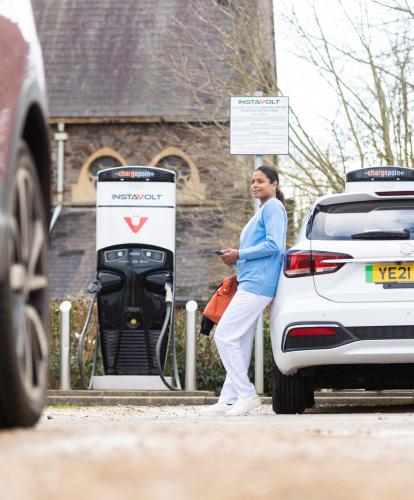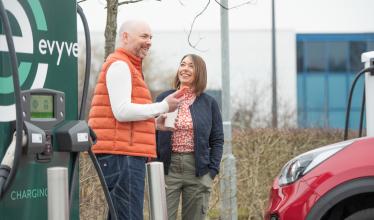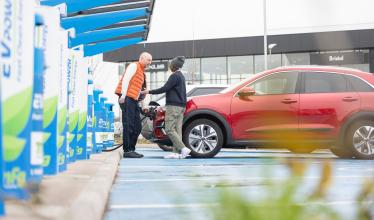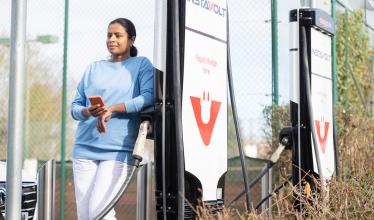If you’re thinking about buying an electric car, or you’re the first-time owner of a brand new electric vehicle – congratulations! Welcome to sustainable transport: you’re about to make a big difference to the world.
We hope you’ve had a chance to download the Zapmap app and begun to take a look at the EV charging infrastructure in your area. We know that getting started with an electric vehicle (EV), and navigating the public charging network, can at first be overwhelming.
That’s why our aim is to make the transition to electric as simple as possible for you – not only through our app and desktop map, but with our handy selection of guides and tools too.
Quick tips from Zapmap users
Sometimes the best and most helpful advice comes from people who have first-hand, real-world experience – starting from zero knowledge and learning along the way.
That's why we’ve put together this list of helpful tips from Zapmap users. There are recommendations from all manner of users – including, but not limited to, regular Zapmap contributors such as Steve 17, Womansrighttocharge, RichardAB, Orrery, cvxx2, Optimist, and contender – and they should get you off to a great start on your electric journey!
1. Walk before you run
If you’re new to driving or owning an electric car, you might find the first couple of times you charge a little daunting. After all, there are a lot of different charging networks out there – and various connector types available.
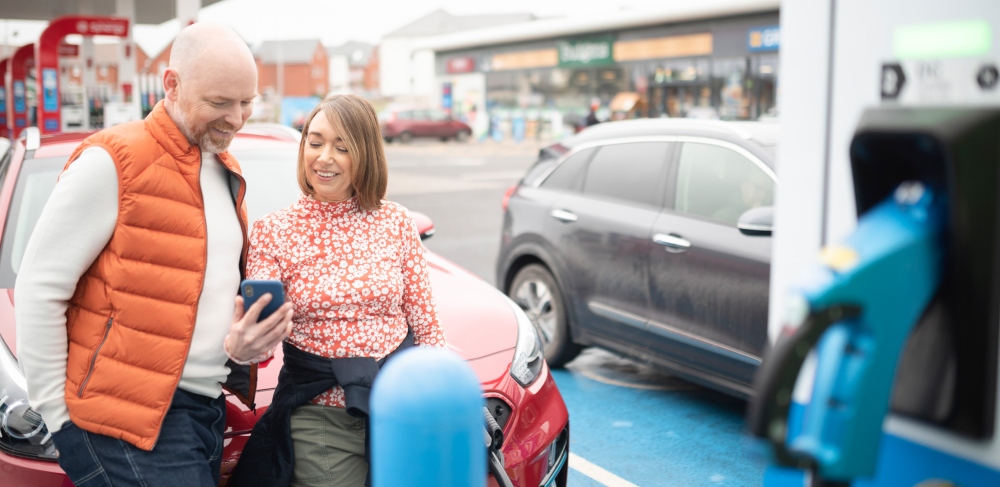
Start your first charging session close to home.
“Practice charging near home on networks you plan to use," says one long-time Zapmap user. "Don’t wait until you are in the middle of nowhere with 5% battery to find out how to use a network.”
2. Understand what AC & DC mean for your car
“It's important to understand the difference between AC and DC charging,” says another regular Zapmap contributor.
The power that comes from the grid is always alternating current (AC). Batteries, like the one in your EV, can only store power as direct current (DC), however. The difference lies in where the AC power gets converted into direct current (DC) – inside or outside the car.
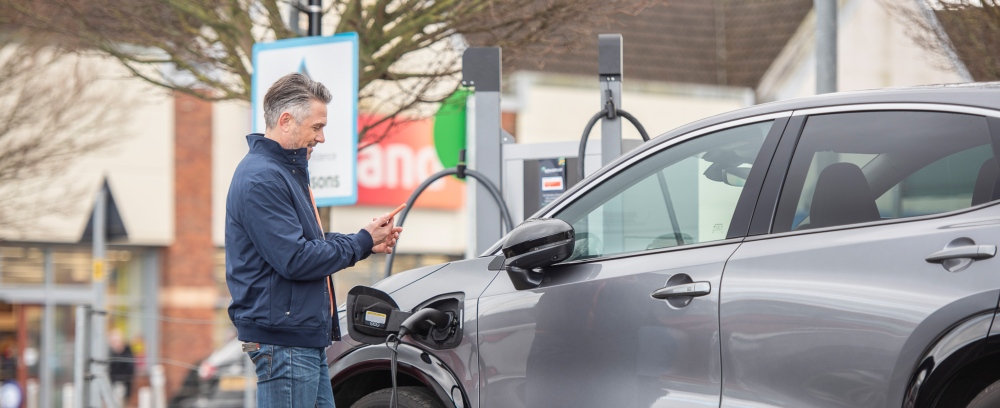
Is the charging device you're using AC or DC?
Practically speaking, find out what your car’s max AC rate is, and whether it needs a single-phase or a three-phase Type 2 cable. Charge point operator Osprey has a handy AC rate calculator that shows the maximum charging speed for your car on different types of charge point.
3. Pump up your tyres
In some circumstances, softer tyres can offer better grip. However, when it comes to EVs, softer tyres can have an effect on range.
Soft tyres use more power, we recommend regularly checking your tyre pressure and always adhering to the manufacturer's recommendation when inflating.
Also, softer tyres wear out more quickly. So while you’re checking your PSI, take a moment to check your tread depth too. The minimum legal limit is just 1.6mm, but that does not guarantee safety. The RAC recommends tyre replacement once the tyres get down to 3mm of tread depth.
So keep your tyres well inflated!
4. Plan your stops to charge
“Plan to use multi-charger hubs, not single chargers, which may be vacant or have a 3 car queue when you get there,” says another user.
Using the Zapmap app to plan your route, you’ll be able to see the number of charge points at the recommended charging location stops.
The more charging devices there are, the less likely you’ll have to wait to plug in. And thanks to live data partnerships with many charge point operators, it’s possible to see the live status and availability of charge points just by opening the Zapmap app.
Of course, with Zapmap Premium you can also access live availability status on your car’s infotainment display via Apple CarPlay or Android Auto.
Bonus tip from an experienced Zapmap user: “If a charger is in use, look on ‘list’ on the Zapmap app for the nearest available charge point rather than queuing. It may be just a few minutes away.”
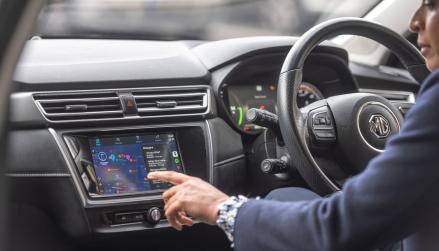
View nearby chargers in your car dashboard using Zapmap Premium.
5. Don’t rely on a debit card to pay
With several different ways to pay for EV charging in the UK, all charging networks are required to provide pay-as-you-go access. Many networks now take contactless credit or debit card payment and, generally speaking, charge point operators have been moving to make payment easier for EV drivers.
The government previously mandated that contactless payment be available on all new rapid and ultra-rapid chargers that are installed. After the 2023 Charge Point Regulations pass through Parliament, all existing 50kW+ chargers will also be required to accept contactless payment. This will of course take time to come into effect.
What's more, many slow and fast chargers across the UK do not have contactless capability and are unlikely to receive an upgrade for some time. (Again, once the 2023 Charge Point Regulations pass through Parliament all new chargers above 8kW will be required to take contactless.)
Using an RFID card is also a reliable payment method. (You can order a Zapmap charging card by selecting 'Charging card' in the Payments settings of the Zapmap app.) However, if they don't have contactless capability, many networks currently require customers to download their network app.
6. Pay with Zapmap: Avoid all the apps
In recent years, Zapmap heard a message coming loud and clear from EV drivers across the country: make paying for charging simple. So we launched a simple way to pay for electric car charging across networks from within the Zapmap app.
A single-app payment solution that uses a credit or debit card to pay for charging, paying with the Zapmap app avoids the hassle of using multiple apps across different networks. It means you can search, plan and pay for charging all within the app.
You can also view your charging history, receive live status updates while away from your vehicle, and download receipts. Find Zapmap compatible charge points using the ‘payment’ and ‘network’ filters on the app and desktop map to see participating networks.
“Zap-Pay is very intuitive in terms of what you can do with it. It's useful and very easy to set it up,” says Zapmap user Paven. “For us it works a treat.”
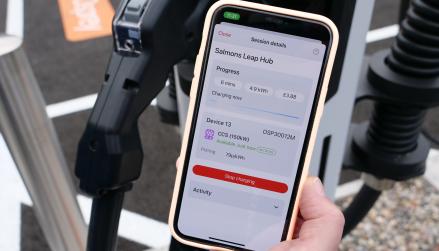
View charging progress while away from your vehicle with Zapmap.
7. Note the difference between pre-auth fees & charging costs
Many charge point operators will charge a pre-authorisation fee, in much the same way that many pay-at-pump fuel pumps do.
“Understand pre-authorisation amounts and that this hasn’t been charged,” says a long-time Zapmap user. This charge amount is a temporary hold of funds placed on your debit or credit card by a company to ensure enough money is available to pay for a product or service.
When paying with Zapmap, you’ll see a pre-authorisation fee of either £30 for registered users, and £60 for non-registered users. This money is not taken from your account, but is held temporarily, and will be released back to you within three to five days.
8. Don't overstay your welcome
“Be wary of parking restrictions especially at retail outlets and hotels,” says a regular Zapmap contributor. “Check the ‘info’ tab on the Zapmap for details and ask at e.g. pubs.”
Some charge points within parking restriction zones controlled by local councils will allow EV drivers to park and charge without a permit or pay and display ticket, but in these instances your car MUST be charging.
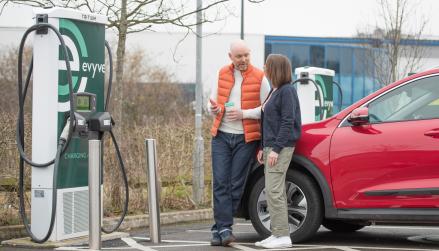
Be mindful of parking restrictions, especially at places such retail car parks.
However, just because you’re paying to charge your EV, don't assume that the cost of parking is included. Check with the parking operator’s guidelines, and don’t overstay on the charger or in the car park, or you could end up being fined.
9. Keep an eye on your miles per kWh
Heavy acceleration and high speeds equate to your EV’s range reducing much faster than if you are mindful with your driving and take a gentler approach.
“‘Keep an eye on miles/ kWh or equivalent,” says one Zapmap user. “It should be around 3.2 in winter and approaching 4 in summer.”
If you spot your miles per kWh figure reducing it might be time to adjust your driving style. For example, you could make greater use of your EV’s regenerative braking system, reduce how quickly you accelerate, or brake more gently.
We hope you've found these tips useful. If you haven't already, we'd recommend downloading the Zapmap app, which will enable you to explore the EV charging infrastructure in your area at your leisure. It's a great place to get started, and there are loads of helpful hints and tricks in the app from other electric car drivers. Happy charging!
